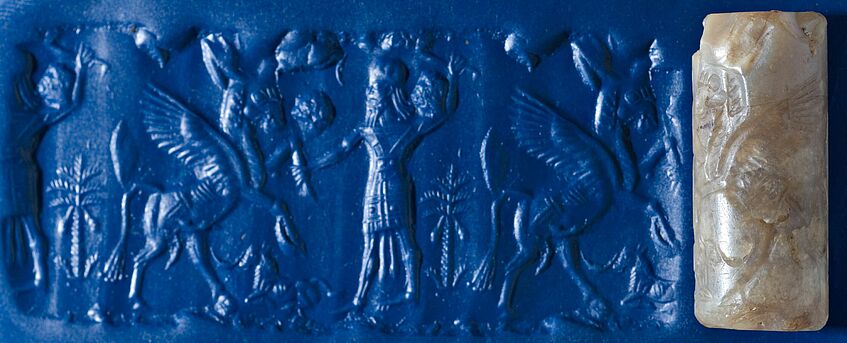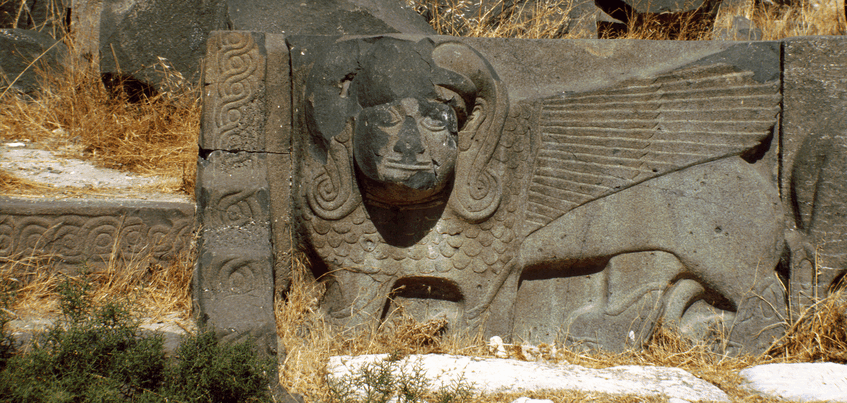Ancient Near Eastern Studies in Vienna
Ancient Near Eastern Studies (Assyriology) and Near Eastern Archaeology are concerned with the languages, cultures and material legacy of the civilizations of ancient Mesopotamia, from the invention of writing at the end of the 4th millennium BCE to the end of cuneiform tradition in the 1st century CE. The geographical area covers modern-day Iraq, Syria, Turkey, Iran and their neighbouring countries.
Research foci of Ancient Near Eastern Studies in Vienna
Assyriology
The primary sources for Assyriology are texts in various languages that were written in the cuneiform script, mostly on clay tablets but also on other media. The most important languages are Sumerian and Akkadian (Babylonian and Assyrian) in Mesopotamia and Hittite in Asia Minor. There are also other languages that were written in cuneiform, such as Hurrian, Urartian, Elamite, Ugaritic and Old Persian. The languages native to Syria and the Levant, such as Amorite, Ugaritic, Phoenician and ancient Aramaic, are also included.
Around 550,000 cuneiform texts have been found so far, representing the oldest and second-largest text corpus from antiquity, outnumbered only by Greek texts. The corpus continues to grow, however, because of new and continuing excavations, and many of the texts are still unpublished.
The extant texts span the fields of economics, law, administration, social and power structures, literature, and religion, representing genres as diverse as literature, invoices and receipts, legal texts, royal inscriptions, epics, prayers and cult instructions and many more. Ancient Near Eastern Studies thus deals with a wide range of topics, from the oldest literature of humankind, to religious and economic history, to the history of science, for example the field of astronomy, which has its roots in ancient Mesopotamia. On the one hand, the sources can be evaluated philologically and linguistically: grammar and etymology, for example, can reveal much about the writers, but also about cultural contacts and the migration of people in the Ancient Near East. On the other hand, the texts can be interpreted from a cultural-historical perspective. Ancient Near Eastern Studies combines these approaches, resulting in a multi-layered image of a fascinating ancient culture that is constantly changing and expanding through dynamic research activities.

Detail of cuneiform tablet: hymn to Marduk 1st millennium B.C., Metropolitan Museum New York, inv.no. 86.11.313 @ public domain: www.metmuseum.org/art/collection/search/321937
Near Eastern Archaeology
In reconstructing the ancient Near East, Assyriology is supported by Near Eastern Archaeology. This field deals with the region’s material legacies starting with the beginning of sedentism in the 10th millennium BCE. In Vienna, however, the focus is on historical times. Artefacts and their contexts offer substantial evidence for reconstructing the daily life of common people as well as elites and rulers. In addition to the history of typological development, which provides a basis for assigning objects to the correct epochs, the focus is on the interpretation and classification of the objects within their cultural environment, in which architecture also plays a major role. The variety of artefacts, from simple ceramic objects to luxury items made of precious metals, which were produced with the highest skills of craftsmanship and artistry, offers a wide field for investigations of all kinds. Studies of material culture and archaeology incorporate the textual sources studied within Assyriology, and vice versa, this close collaboration between the two fields characterizing the approach to ancient Near Eastern history at our university.

Cylinder seal from Tell Tweini, Syria, middle assyrian (13th century BC), excavation no. TWE-A-07-05851-M-001 @ University Ghent, photo H. Hameeuw
In Vienna, the main research focuses of Assyriology’s philological-historical studies, strongly research-led teaching, and externally-funded projects are in the subfields of Mesopotamian social and economic history, Babylonian literature, and Babylonian science. As a necessary complement to this, Viennese Near Eastern Archaeology is concerned with the development of Mesopotamian finds that can shed light on these issues.
Within the core areas of its activities, Viennese Ancient Near Eastern Studies ranks alongside the leading international academic institutions in the field. The high quality of this subject area is apparent, for example, in the strong ties with the Austrian Academy of Sciences, in which two Assyriologists—H. Hunger (retired) and M. Jursa—are members, but, most of all, from the high number of research projects that have been conducted in the past years with the support of competitive third-party funding.
The specific focus of most of Vienna’s research in social and economic history is Babylonia in the first millennium BCE. M. Jursa directs a number of projects in this subject area—including his current project about the material culture of Babylonia—under whose auspices numerous theses and dissertations have been completed. A Marie Sklodowska-Curie project conducted by S. Zaia about urbanism and politics in Assyria and Babylonia falls within this subject area as well.
In terms of Babylonian scholarship and literature, the major ERC-Project REPAC, a five-year project conducted by N. De Zorzi, should be mentioned in particular. This project is dedicated to the structural elements of scholarly texts from Babylonia, which allow for insights into ancient argumentation strategies and worldviews. To this subject area also belongs M. Jursa’s project concerning Babylonian literature of the late period (in cooperation with Nathan Wasserman from Hebrew University Jerusalem) and De Zorzi’s research project about Babylonian omens that are related to the behaviour of animals. Finally, R. Pirngruber’s project about Babylonian astronomical diaries, which follows the work of H. Hunger (which was also completed in Vienna), makes a unique text corpus from 1st millennium BCE Babylonia accessible for the history of science.

Sphinx from the temple of Tell Ain Dara, Northern Syria, end of 2nd millennium BC @ Stephan Procházka
